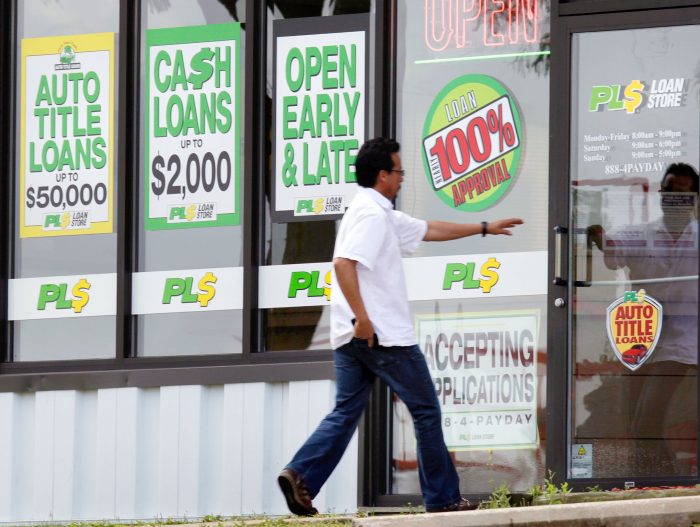
In this wonderful time of the year when family and friends gather in good cheer to celebrate the holidays, nearly everyone has a number of lists. From greeting cards to shopping for gifts, decorations and more, lists are made and reviewed to keep pace with the barrage of seasonal activities.
But if holiday lists seem bigger than budgets, turning to a high-interest, “small dollar” loan can turn joy and merriment into a financial quagmire. The good news is that holiday financial hangovers that predatory lenders give, do not need to be a part of your celebrations.
Just keep walk or drive past the brightly-colored signs advertising high-interest, small dollar loans. Both payday and car title loans can provide quick cash; but the harms these loans create will likely linger well past the winter’s cold. In truth, these predatory loans often lead to consumers paying more in interest and fees than for the money borrowed.
Research by the Center for Responsible Lending (CRL) has found that predatory payday loans drain $4.1 billion in fees from consumers annually — borrowers who typically are unable to fully repay the original loan, usually in two weeks’ time. With average annual interest rates averaging 391 percent, 75 percent of all payday loans go to borrowers with more than 10 loans a year.
Like payday loans, car title loans are often marketed as an easy way to get cash without a credit check – but with interest rates that tend to be 20-30 times higher than that of credit cards. The average car title loan of about $1,000 can only be secured by signing a personally-owned car as collateral. Further, the loan may only be a fraction of the marketable value of the vehicle. While the lender holds on to a car title, the borrower is faced with triple-digit interest and, in one of five cases, a whopping 20 percent, the loss of personal transportation.
As harmful as payday and car title loans are, other seemingly harmful small dollar transactions can also cause financial havoc.
If you believe pre-paid cards will always avoid financial rip-offs, think again.
Before paying cash for this convenient form of plastic, read all of the fine print that explains the terms and fees that come with its usage. Terms and options can and do vary significantly. Many include a range of fees from activation, to learning your current balances, reloading monies and in some cases fees for inactivity. By the time all applicable fees are assessed, the amount of money actually available on that prepaid card can shrink and shortchange how far it can help on purchases.
Similarly, the convenience of debit cards can easily trigger overdraft charges for consumers with slim or no checking account cushions. CRL research has shown that although overdraft fees vary by institution, the average $35 overdraft fee on a debit card is double the amount of the overdraft itself. Banks engage in a range of unfair and deceptive tactics to maximize these fees, which can amount to hundreds of dollars over the course of just a day or two–talk about a holiday damper. Too many overdrafts can lead to involuntary account closures.
This holiday season try adding a full measure of practical sense to help your dollars preserve the spirit and joy of the season – it only comes once a year!
Charlene Crowell is the Communications Deputy Director with the Center for Responsible Lending. She can be reached at: Charlene.crowell@responsiblelending.org.





